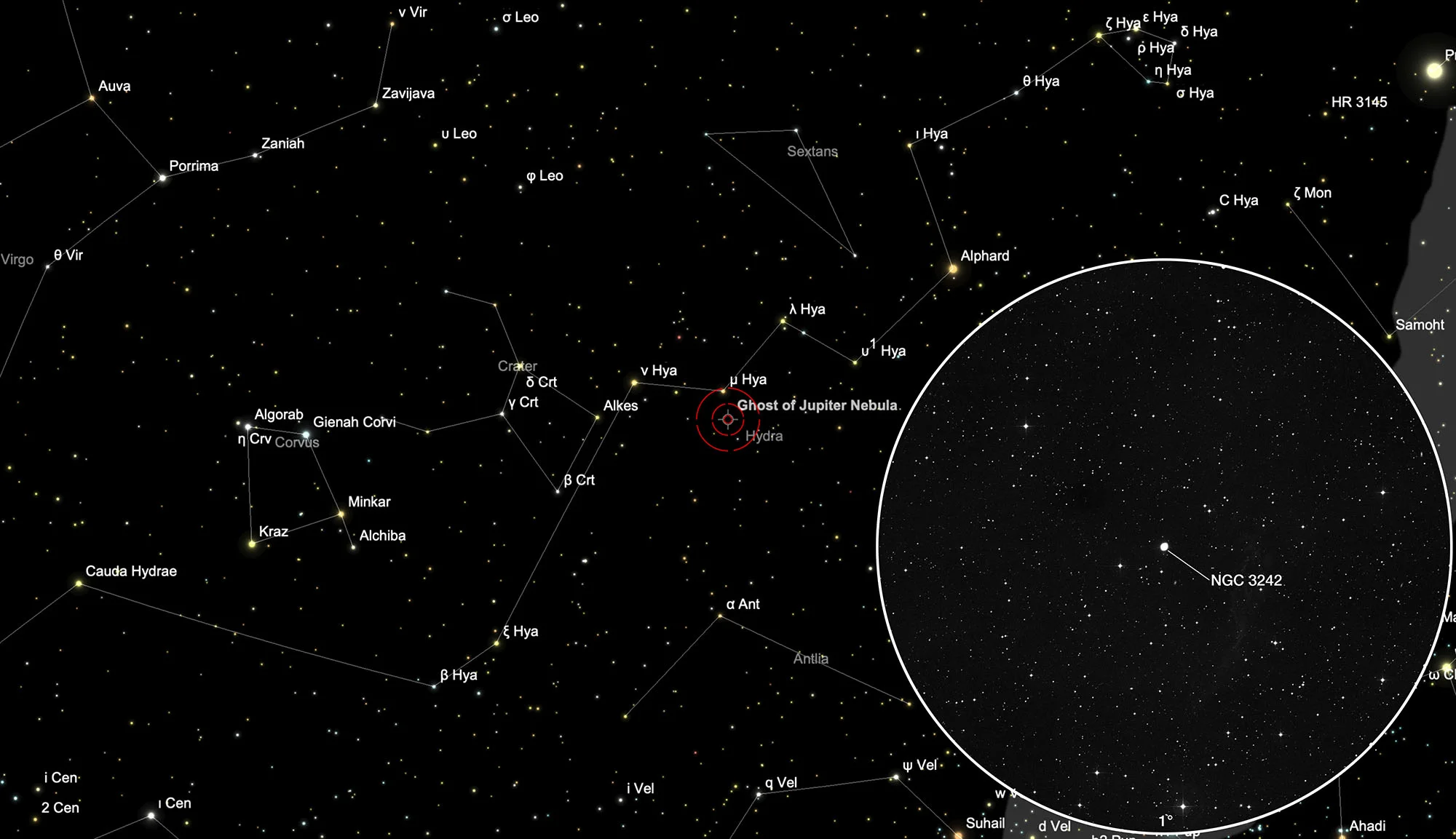Ghost of Jupiter (NGC 3242)
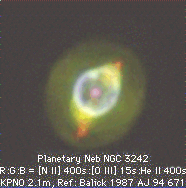
Object Description
This nebula was discovered on 7 February 1785 by the german-british astronomer William Herschel using his selfmade 18.7 inch reflecting telescope and cataloged as IV 27. He described it as follows: «Beautiful, brilliant, planetary disk ill defined, but uniformly bright. The light of the colour of Jupiter. 40" diameter, second observation near 1' diameter by estimation.» [463]
NGC 3242 is one of the brightest planetary nebulae. It was nicknamed «Ghost of Jupiter» because the 30 to 40 arc second, not quite circular disc resembles a ghostly image of Jupiter in small telescopes.
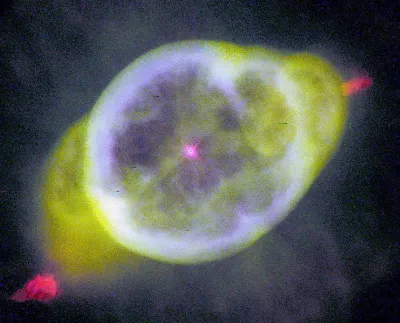
Even in medium-sized amateur telescopes, an elliptical ring structure can be seen, surrounded by a fainter halo (see drawing below). This is also supported by the classification according to Vorontsov-Velyaminov (IV+IIIb = ring structure + irregular disk with traces of a ring structure).
The halo is the shed shell of the red giant, the progenitor star, which is excited to glow by the strong UV radiation from the central star. The gas appears bluish-green to us visually because the main emission comes from doubly ionized oxygen (O III), whose strongest emission line is at 5007 angstroms. Two causes are held responsible for the elliptical ring structure:
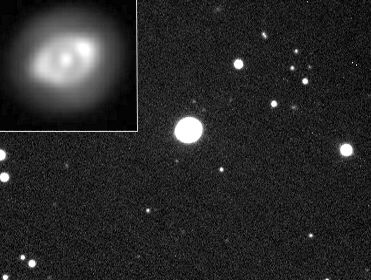
- The interaction of the wind of the central star with the stellar wind of the progenitor: When the fast wind of the central star meets the slower wind of the progenitor, a shock front is created. Matter located there is excited and emits light. The area therefore appears brighter to us than the surroundings.
- Model calculations showed that the conspicuous axial symmetry of the ring structure was caused by a brown dwarf moving closely around the central star about 4000 years ago.
Recent observations with the Hubble Space Telescope (HST) show extremely fine structures in the nebula that cannot yet be well explained with previous models. Such structures have also been observed in other planetary nebulae such as NGC 7662.
| Designations | PN G261.0+32.0: NGC 3242, PK 261+32.1, ARO 4, ESO 568-05, VV 57, VV' 98 |
| Right Ascension (J2000.0) | 10h 24m 46s |
| Declination (J2000.0) | -18° 38' 38" |
| Dimensions | 25." (optical) |
| Distance | 0.76 kpc |
| Radial Velocity | +4.6 ± 0.6 km/s |
| Expansion Velocity | 20. (O-III) 27.5 (N-II) km/s |
| C-Star Designations | AG82 127, BD -17 3140, GC 14298, GCRV 6542, HD 90255, NSV 4848, PLX 2442, SAO 155965, TD1 14821 |
| C-Star Magnitude | B: 12.02, V: 12.31 |
| C-Star Spectral Type | O(H) |
| Discoverer | HERSCHEL 1785 |
How to find the Ghost?
Jupiter's ghost is in the constellation Hydra. The best way to find it is to start from the star μ Hydrae, because the PN is 1.8 degrees south of it. With an apparent magnitude of 3.8, this red giant star is visible to the naked eye. If you use a low-power, wide-field eyepiece to locate, the small, greenish disc of NGC 3242 should already be visible. On 24 February it is in opposition to the Sun and crosses the meridian at local midnight. The best viewing time is November to July.
Visual Observation
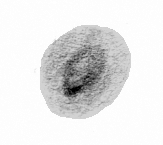
200 mm aperture: With a declination of -18.6 degrees, Jupiter's ghost is relatively low. In order to observe it under optimal conditions, one should wait for the passage of the meridian. The surface brightness of NGC 3242 is very large. It is therefore worth enlarging over 200x. The view in the 20 cm telescope at 290x (7 mm Nagler) is breathtaking. The elliptical ring structure mentioned in the description, which is reminiscent of a human eye, is clearly visible in the 20 cm reflector. The ellipse appears brighter at the SE end (see author's drawing). As with planetary observation, the Ghost of Jupiter benefits from observing for as long as possible. The chance of discerning fine details during short moments of extreme calm increases with the observation time. In my opinion, NGC 3242 is not only one of the most interesting planetary nebulae, but also one of the easiest to observe.
